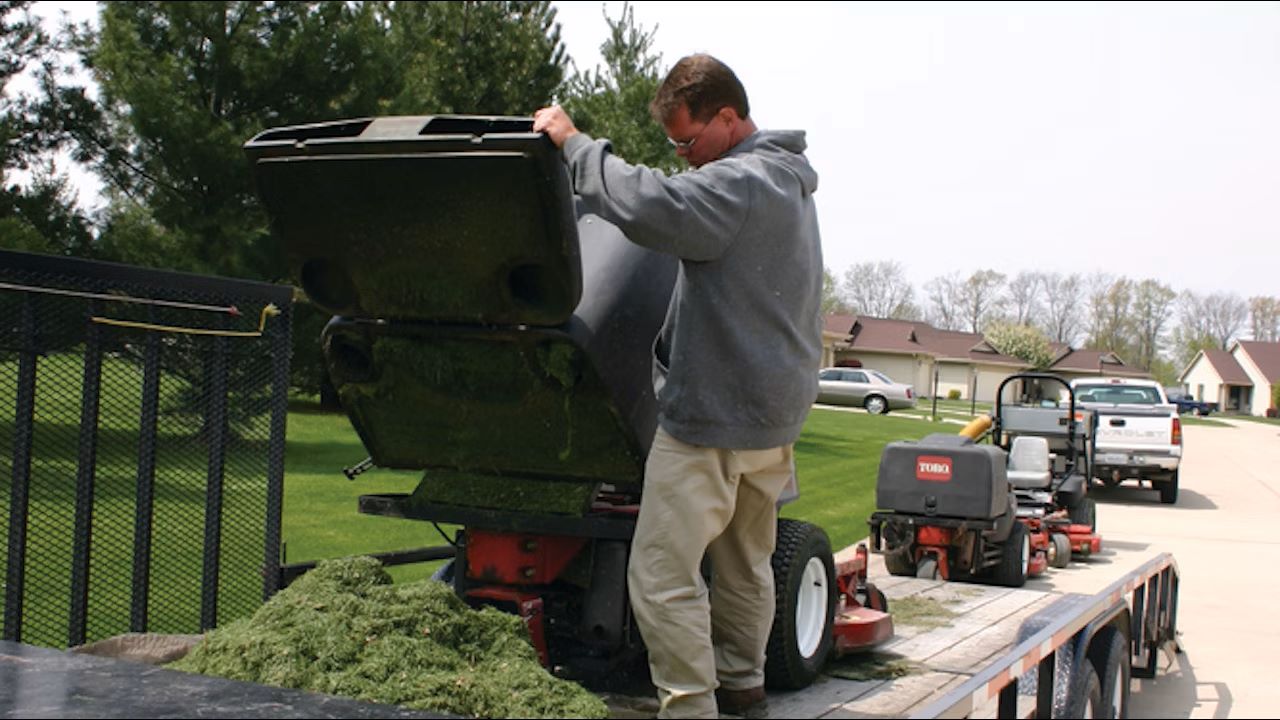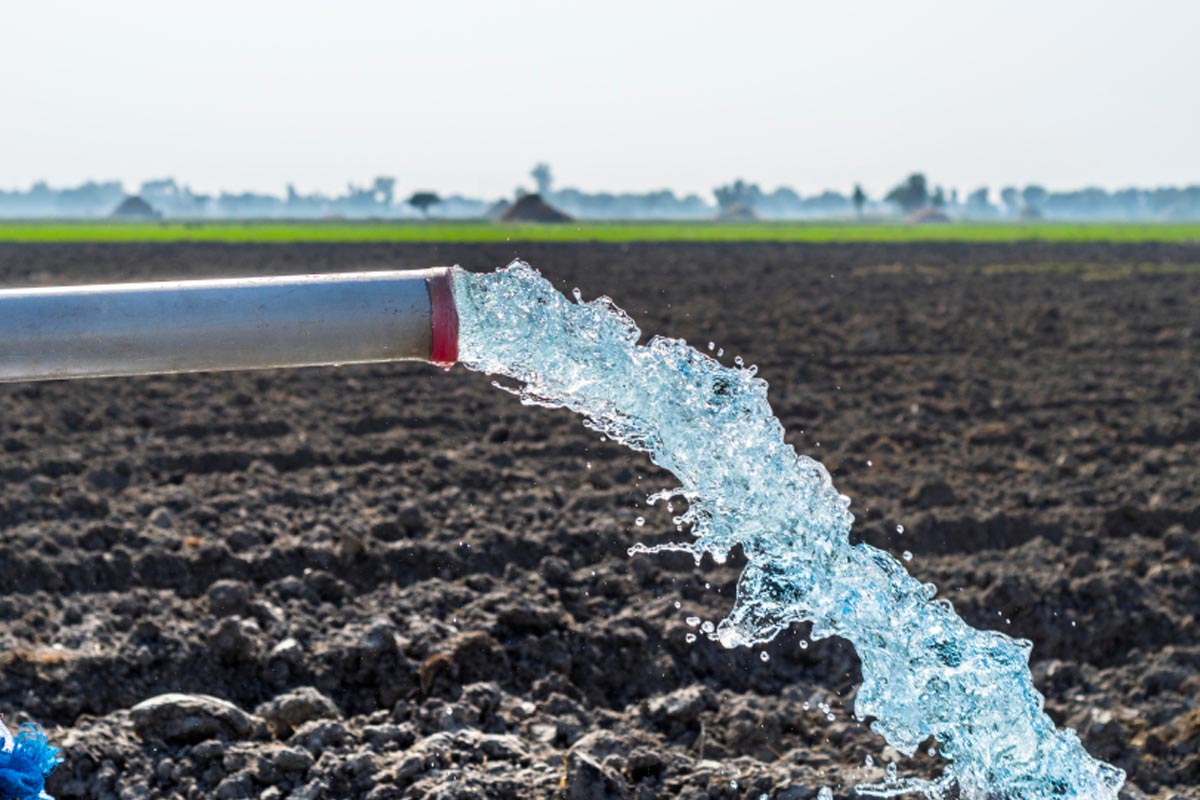Home>Gardening Basics>Understanding Soil>How Much Does A Yard Of Soil Weigh


Understanding Soil
How Much Does A Yard Of Soil Weigh
Modified: February 9, 2024
Learn the weight of a yard of soil and understand the importance of soil composition. Discover how to calculate soil weight and make informed landscaping decisions.
(Many of the links in this article redirect to a specific reviewed product. Your purchase of these products through affiliate links helps to generate commission for Chicagolandgardening.com, at no extra cost. Learn more)
Table of Contents
Introduction
Welcome to the world of soil! As an SEO expert with a deep understanding of soil, I am excited to share my knowledge with you. Soil is a vital component of our environment and plays a crucial role in supporting plant growth, maintaining water balance, and providing habitat for various organisms. Understanding the weight of yard soil is essential for various applications, such as construction, landscaping, and gardening.
When it comes to the weight of yard soil, there are several factors that come into play. Different types of soil have varying densities and moisture content, which can significantly impact their weight. Additionally, the compaction level and organic matter content can also influence the weight of soil.
Determining the weight of yard soil is not only helpful for planning and estimating purposes but also for ensuring safe handling and transportation. Whether you are a homeowner embarking on a landscaping project or a contractor working on a construction site, knowing the weight of yard soil can help you make informed decisions and avoid potential issues.
In this article, we will explore the factors that affect the weight of yard soil, the methods used to determine its weight, and the average weights of different types of soil. We will also discuss the importance of knowing the weight of yard soil and provide some practical tips for estimating its weight. So let’s dig deeper into the world of soil and uncover the mysteries of its weight!
Factors Affecting the Weight of Yard Soil
The weight of yard soil can vary depending on several factors. Understanding these factors is essential for accurately estimating the weight of soil and planning for various applications. Let’s take a closer look at some of the key factors that influence the weight of yard soil:
- Soil Type: Different types of soil have varying densities, which directly affect their weight. For example, clay soils are generally more compact and heavy compared to sandy soils, which are lighter and more loose. The composition and texture of the soil play a significant role in determining its weight.
- Moisture Content: The amount of moisture present in the soil can significantly impact its weight. Moisture adds to the overall mass of the soil, making it heavier. Saturated soils will weigh more than dry soils. It’s important to consider the moisture content when estimating the weight of yard soil, as it can fluctuate depending on weather conditions and irrigation practices.
- Compaction: The level of compaction of the soil affects its weight. Compacted soils, such as those found in heavily trafficked areas or construction sites, tend to be denser and heavier compared to loose, uncompacted soils. The compactness of the soil depends on factors like foot traffic, machinery, and natural processes like settling and consolidation over time.
- Organic Matter: The presence of organic matter, such as compost or decomposed plant material, can impact the weight of yard soil. Organic matter tends to be lighter in weight compared to mineral particles. Soils with higher organic matter content will have a lower density and may weigh less compared to soils with lower organic matter content.
- Additives and Amendments: The addition of additives or amendments, such as fertilizers, lime, or gypsum, can also influence the weight of yard soil. These substances may have their own weight, which can contribute to the overall weight of the soil. It’s important to consider any additives or amendments when estimating the weight of soil.
These factors interact with each other and need to be considered collectively when estimating the weight of yard soil. By understanding these factors and their impact on the weight of soil, you can make more accurate estimations and ensure proper planning for your landscaping, construction, or gardening projects.
Determining the Weight of Yard Soil
Accurately determining the weight of yard soil is crucial for various applications, including landscaping, construction, and gardening. While it may not be practical to weigh every yard of soil individually, there are several methods available to estimate its weight. Here are some commonly used approaches:
- Weighing: The most accurate method involves physically weighing a known volume of soil. This can be done by using a large container, such as a wheelbarrow or a bucket, and weighing it before and after filling it with soil. The difference in weight will give you the weight of the soil. However, this method is time-consuming and may not be feasible for large quantities of soil.
- Density Calculation: Another approach is to calculate the density of the soil and use it to estimate its weight. The density is determined by dividing the mass of the soil by its volume. To calculate the mass, you can collect a small sample of soil, dry it thoroughly, and weigh it. The volume can be estimated by measuring the length, width, and height of the area where the soil will be placed. By multiplying the volume by the density, you can estimate the weight of the soil.
- Online Calculators: There are several online tools and calculators available that can help you estimate the weight of yard soil based on the type of soil and the dimensions of the area. These calculators take into account the average density of different soil types and provide a rough estimate of the weight.
- Reference Tables: Reference tables that provide the average weight of different soil types per cubic yard can also be helpful. These tables are based on research and provide a general guideline for estimating soil weight.
It’s important to note that while these methods can provide estimates, they may not account for variations in soil composition, moisture content, compaction, and other factors. However, they can give you a reasonable approximation to work with for planning and estimation purposes.
Regardless of the method you choose, it’s always a good practice to account for some additional weight to accommodate for variations and uncertainties. Adding a buffer in your estimations can help ensure that you have enough soil for your project and avoid potential shortages.
Now that we have explored the various methods of determining the weight of yard soil, let’s move on to the average weights of different types of soil to provide you with a better understanding of what to expect.
Average Weight of a Yard of Different Types of Soil
The weight of a yard of soil can vary depending on the type of soil. Different types of soil have different compositions and densities, which directly influence their weight. Here are the average weights of a yard of some common types of soil:
- Clay Soil: Clay soil is known for its compactness and heaviness. On average, a yard of clay soil can weigh between 2,700 and 3,000 pounds. Due to its high density, clay soil is often used in construction, especially for earthworks and foundations.
- Sandy Soil: Sandy soil has a loose, granular texture with larger particles. This type of soil is lighter compared to clay soil, with an average weight ranging from 2,200 to 2,500 pounds per yard. Sandy soil is well-draining and commonly used in gardening and landscaping projects.
- Silt Soil: Silt soil has smaller particle sizes compared to sandy soil but is still relatively lightweight. The average weight of a yard of silt soil falls within the range of 2,400 to 2,700 pounds. Silt soil is often fertile and suitable for agricultural purposes.
- Loam Soil: Loam soil is a balanced mixture of sand, silt, and clay particles. It is considered ideal for gardening and landscaping due to its good drainage and moisture retention capabilities. The weight of a yard of loam soil typically ranges between 2,300 and 2,500 pounds.
- Peat Soil: Peat soil is composed of partially decomposed organic matter and is known for its high water-holding capacity. This type of soil is lightweight, with an average weight of around 1,000 to 1,300 pounds per yard.
Keep in mind that these weight ranges are averages and can vary based on factors such as moisture content, compaction, and organic matter. It’s always a good idea to consider the specific characteristics of the soil you are working with and make adjustments to your estimates accordingly.
By having a general understanding of the average weights of different types of soil, you can make more informed decisions when planning your projects and ensure that you have the appropriate amount of soil for your needs.
Now, let’s move on to the next section, where we will discuss some practical tips for estimating the weight of yard soil.
Estimating the Weight of a Yard of Soil
Estimating the weight of a yard of soil is an important step in planning and executing various projects. While precise measurements might not always be feasible, there are some practical tips you can follow to get a reasonable estimate. Here are a few guidelines to help you in estimating the weight of a yard of soil:
- Know the type of soil: Different types of soil have different average weights per yard, as discussed in the previous section. By identifying the type of soil you are working with, you can use the average weight range as a starting point for your estimation.
- Consider the moisture content: Moisture content affects the weight of soil. Dry soil will weigh less compared to wet or saturated soil. Take into account the current moisture content of the soil, and adjust your estimation accordingly.
- Account for compaction: Compacted soil is denser and heavier than loose soil. If the soil you are working with is heavily compacted, consider adding some additional weight to your estimate to account for the increased density.
- Measure the volume: If possible, measure the length, width, and depth of the area where you will be placing the soil. Multiply these measurements together to find the volume. Keep in mind that the volume may vary depending on the shape of the area, so it’s best to measure multiple points and take an average.
- Use online calculators or reference tables: Take advantage of online calculators or reference tables that provide estimates based on the type of soil and volume. These tools can give you a rough approximation of the weight of the soil you will need.
- Consider safety margins: It’s always a good idea to add a safety margin to your estimation to account for uncertainties and variations. Adding a buffer of around 10-15% can help ensure that you have enough soil for your project, even if there are slight deviations in weight or volume.
While these tips can provide a reasonable estimate, it’s important to remember that they are not exact measurements. Soil weight can vary based on a number of factors, and it’s always best to account for potential variations in your planning.
By following these estimation tips, you can better plan for your projects and ensure that you have sufficient yard soil to meet your needs.
Now, let’s move on to the next section, where we will discuss the importance of knowing the weight of yard soil.
Importance of Knowing the Weight of Yard Soil
Understanding the weight of yard soil is crucial for a variety of reasons. Whether you are planning a landscaping project, undertaking construction work, or tending to your garden, knowing the weight of the soil can have several benefits. Let’s explore some of the reasons why it is important to have this knowledge:
- Planning and Budgeting: By knowing the weight of yard soil, you can accurately estimate the amount of soil you will need for your project. This helps in budgeting and ensures that you have enough soil to complete the task without any shortage or excess.
- Transportation and Logistics: Yard soil can be heavy, and knowing its weight is crucial for transportation and logistics. Understanding the weight allows you to make appropriate arrangements for hauling and ensures that you have the necessary equipment and vehicles to handle the load safely and efficiently.
- Structural Integrity: In construction projects, soil is often used as a supporting material for foundations, roads, and other structures. Knowing the weight of the soil is critical for designing and constructing these structures to ensure that they can bear the load effectively and maintain their structural integrity over time.
- Plant Health and Growth: In gardening and landscaping, the weight of the soil directly affects the health and growth of plants. Different types of plants have varying soil requirements, and having the right weight of soil helps provide the necessary nutrients, moisture, and stability for optimal plant growth.
- Preventing Soil Erosion: Soil erosion can be a significant concern, especially in areas with steep slopes or heavy rainfall. By understanding the weight of soil, erosion control measures can be implemented effectively, such as adding extra weight or employing erosion control methods to stabilize the soil and prevent erosion.
- Safety and Accurate Measurement: Knowing the weight of yard soil allows for proper planning and ensures the safety of workers and equipment involved in handling and transporting the soil. It also enables accurate measurement and estimation, reducing the chances of errors and miscalculations that could lead to avoidable issues or delays.
Having a comprehensive understanding of the weight of yard soil empowers you to make informed decisions, plan effectively, and achieve the desired results for your projects. It helps in optimizing resources, ensuring stability, and promoting the health and growth of plants or the durability of structures.
Now that we have explored the importance of knowing the weight of yard soil, let’s conclude our article by summarizing the key points discussed.
Conclusion
Understanding the weight of yard soil is essential for a range of applications, including landscaping, construction, and gardening. By considering factors such as soil type, moisture content, compaction, and organic matter, you can estimate the weight of soil in order to plan and execute projects effectively.
We have explored various methods for determining the weight of yard soil, including physical weighing, density calculations, online calculators, and reference tables. While these methods provide estimates, it’s important to consider possible variations and uncertainties.
Different types of soil have different average weights per yard. Clay soil tends to be heavier, while sandy soil is lighter. Silt soil, loam soil, and peat soil have their own weight ranges. By knowing the average weight of different soil types, you can make more accurate estimations for your projects.
Estimating the weight of yard soil involves considering factors like moisture content, compaction, and volume measurements. Online calculators and reference tables can provide helpful estimations as well. Adding a safety margin to your estimations ensures that you have enough soil to complete your project without any shortage or excess.
The weight of yard soil plays a vital role in many aspects, including planning and budgeting, transportation and logistics, structural integrity, plant health and growth, preventing soil erosion, and ensuring safety and accuracy in measurement. By understanding the weight, you can make informed decisions, promote successful outcomes, and maintain the stability and health of your projects.
In conclusion, knowing the weight of yard soil is essential for successful project management. By considering the factors that influence weight, utilizing estimation techniques, and recognizing the importance of accurate measurements, you can confidently embark on your landscaping, construction, or gardening endeavors. So, dig into the world of soil, estimate its weight, and bring your projects to life!




